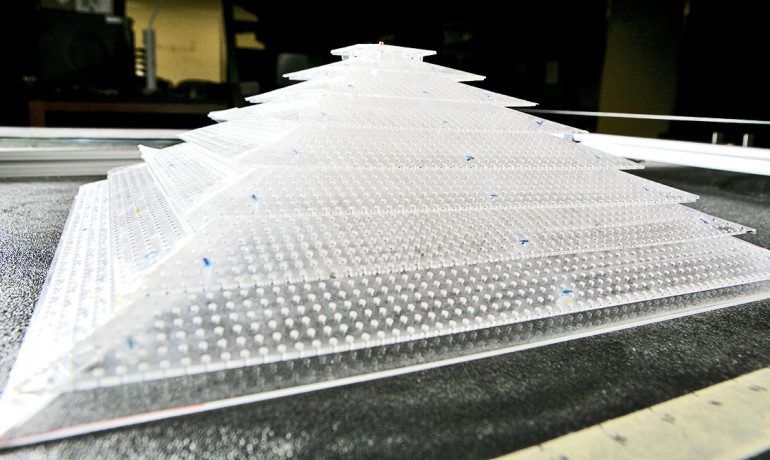Engineers at Duke University have built the world’s first 3-D acoustic cloaking device. For venues, this could help with architectural acoustics.
“The particular trick we’re performing is hiding an object from sound waves,” said Steven Cummer, professor of electrical and computer engineering at Duke University, in an article written by Ken Kingery . “By placing this cloak around an object, the sound waves behave like there is nothing more than a flat surface in their path.”
This all has to do with the field of metamaterials (artificial materials that exhibit properties not normally found in nature). For this cloak, the materials manipulating the sound waves are plastic and air. The final construction looks like a pyramid—plastic plates with air holes in them stacked above each other.
“To give the illusion that it isn’t there, the cloak must alter the waves’ trajectory to match what they would look like had they had reflected off a flat surface,” Kingery wrote. “Because the sound is not reaching the surface beneath, it is traveling a shorter distance and its speed must be slowed to compensate.”
Cummer said that even though the structure looks simple, it’s actually more difficult than it appears and the team had to put a lot of thought into how the sound waves would interact with it.
“To test the cloaking device, researchers covered a small sphere with the cloak and ‘pinged’ it with short bursts of sound from various angles,” Kingery wrote. “Using a microphone, they mapped how the waves responded and produced videos of them traveling through the air. Cummer and his team then compared the videos to those created with both an unobstructed flat surface and an uncloaked sphere blocking the way. The results clearly show that the cloaking device makes it appear as though the sound waves reflected off an empty surface.”
Cummer said that there’s potential for using this technology in venues.
“…the design of auditoriums or concert halls—any space where you need to control the acoustics,” he said. “If you had to put a beam somewhere for structural reasons that was going to mess up the sound, perhaps you could fix the acoustics by cloaking it.”
(Image: Duke University)

